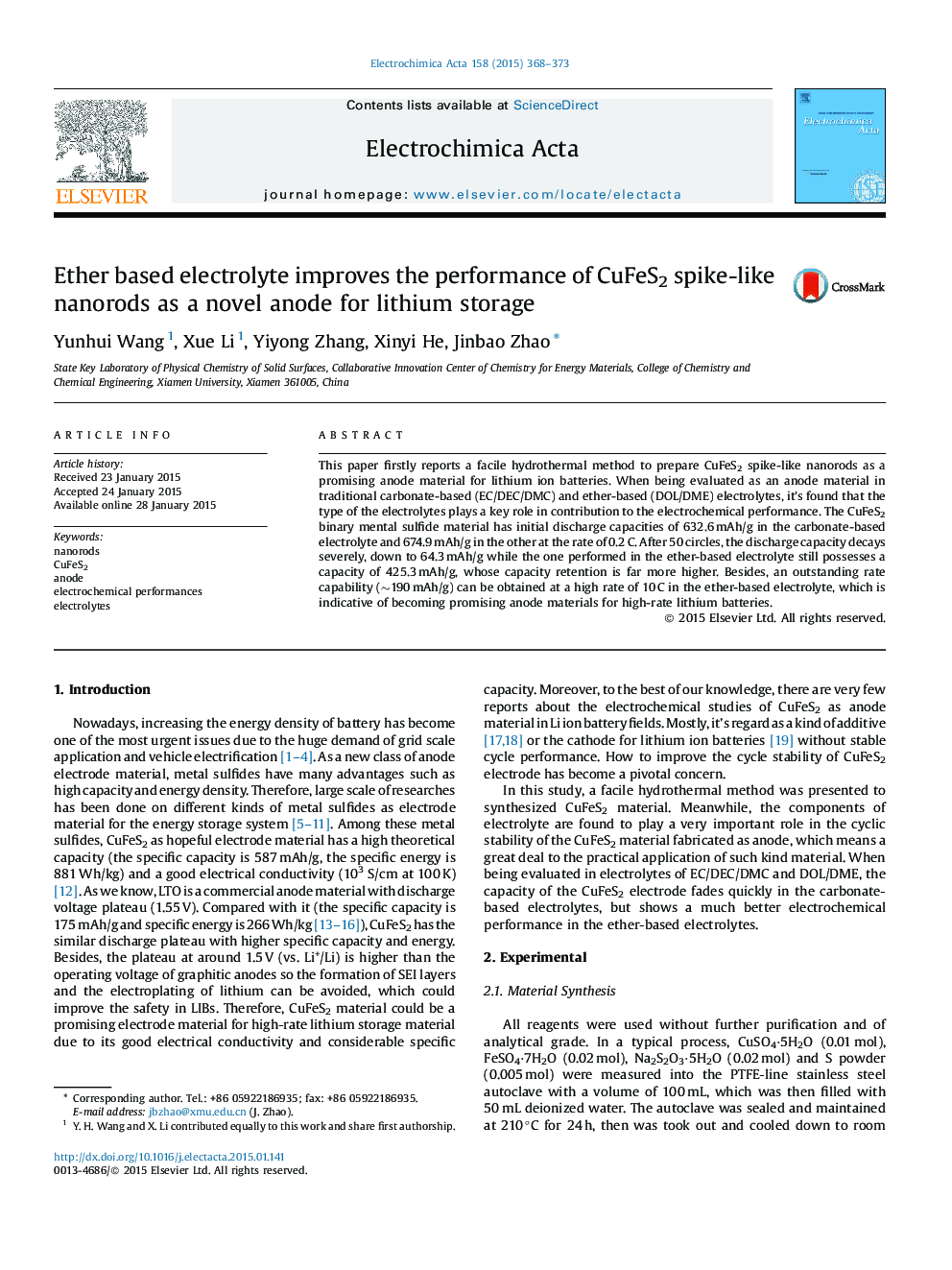| کد مقاله | کد نشریه | سال انتشار | مقاله انگلیسی | نسخه تمام متن |
|---|---|---|---|---|
| 184479 | 459576 | 2015 | 6 صفحه PDF | دانلود رایگان |

This paper firstly reports a facile hydrothermal method to prepare CuFeS2 spike-like nanorods as a promising anode material for lithium ion batteries. When being evaluated as an anode material in traditional carbonate-based (EC/DEC/DMC) and ether-based (DOL/DME) electrolytes, it's found that the type of the electrolytes plays a key role in contribution to the electrochemical performance. The CuFeS2 binary mental sulfide material has initial discharge capacities of 632.6 mAh/g in the carbonate-based electrolyte and 674.9 mAh/g in the other at the rate of 0.2 C. After 50 circles, the discharge capacity decays severely, down to 64.3 mAh/g while the one performed in the ether-based electrolyte still possesses a capacity of 425.3 mAh/g, whose capacity retention is far more higher. Besides, an outstanding rate capability (∼190 mAh/g) can be obtained at a high rate of 10 C in the ether-based electrolyte, which is indicative of becoming promising anode materials for high-rate lithium batteries.
Journal: Electrochimica Acta - Volume 158, 10 March 2015, Pages 368–373